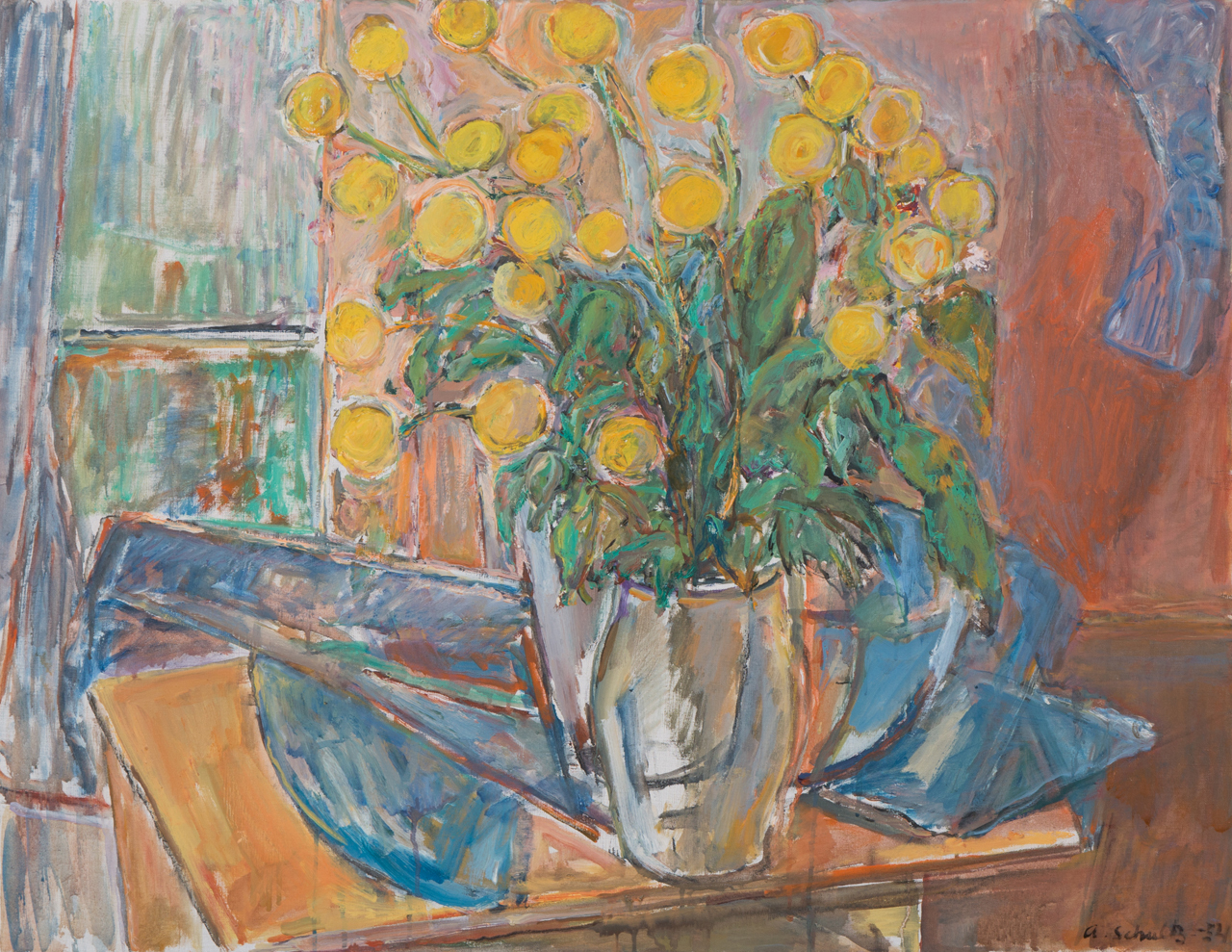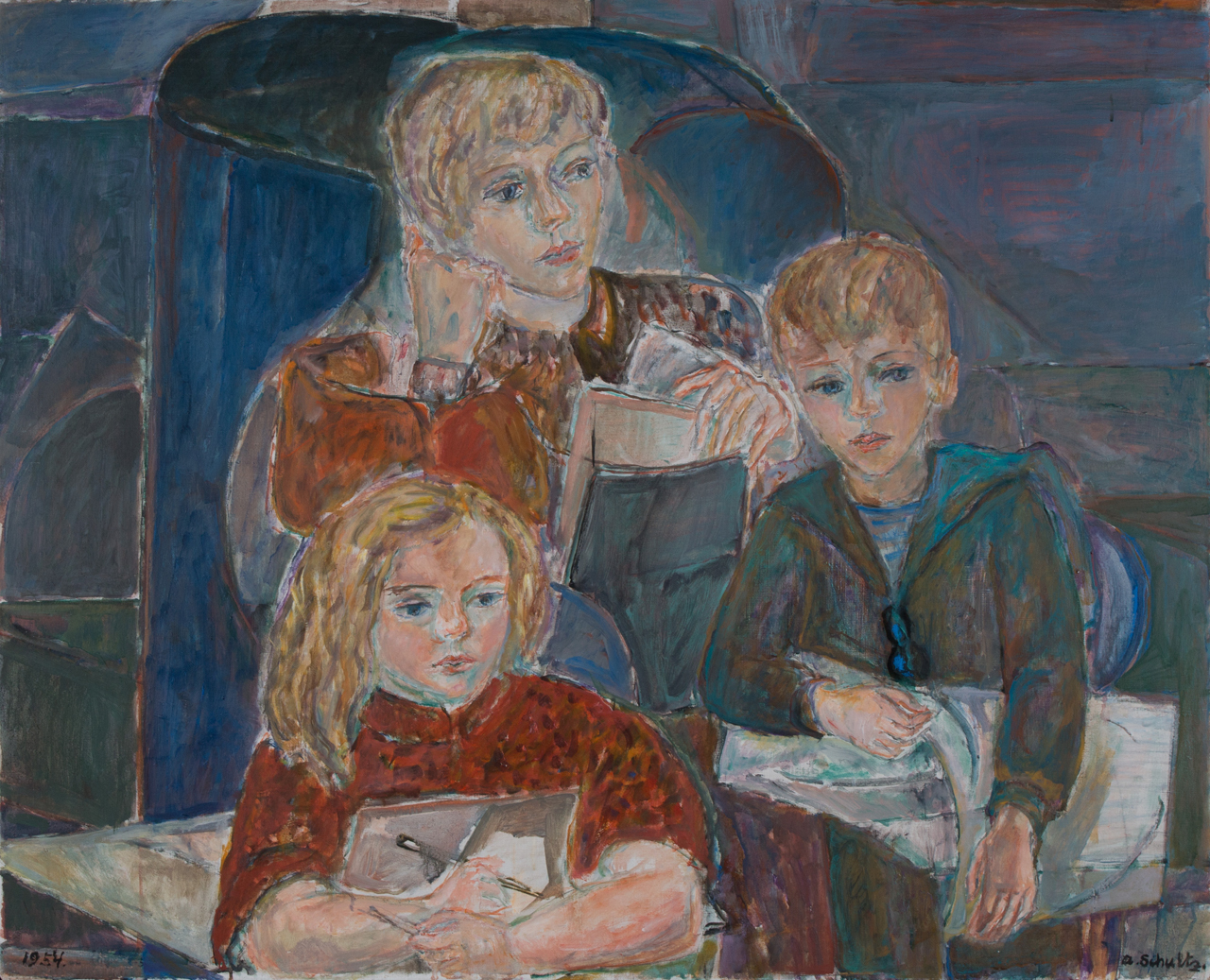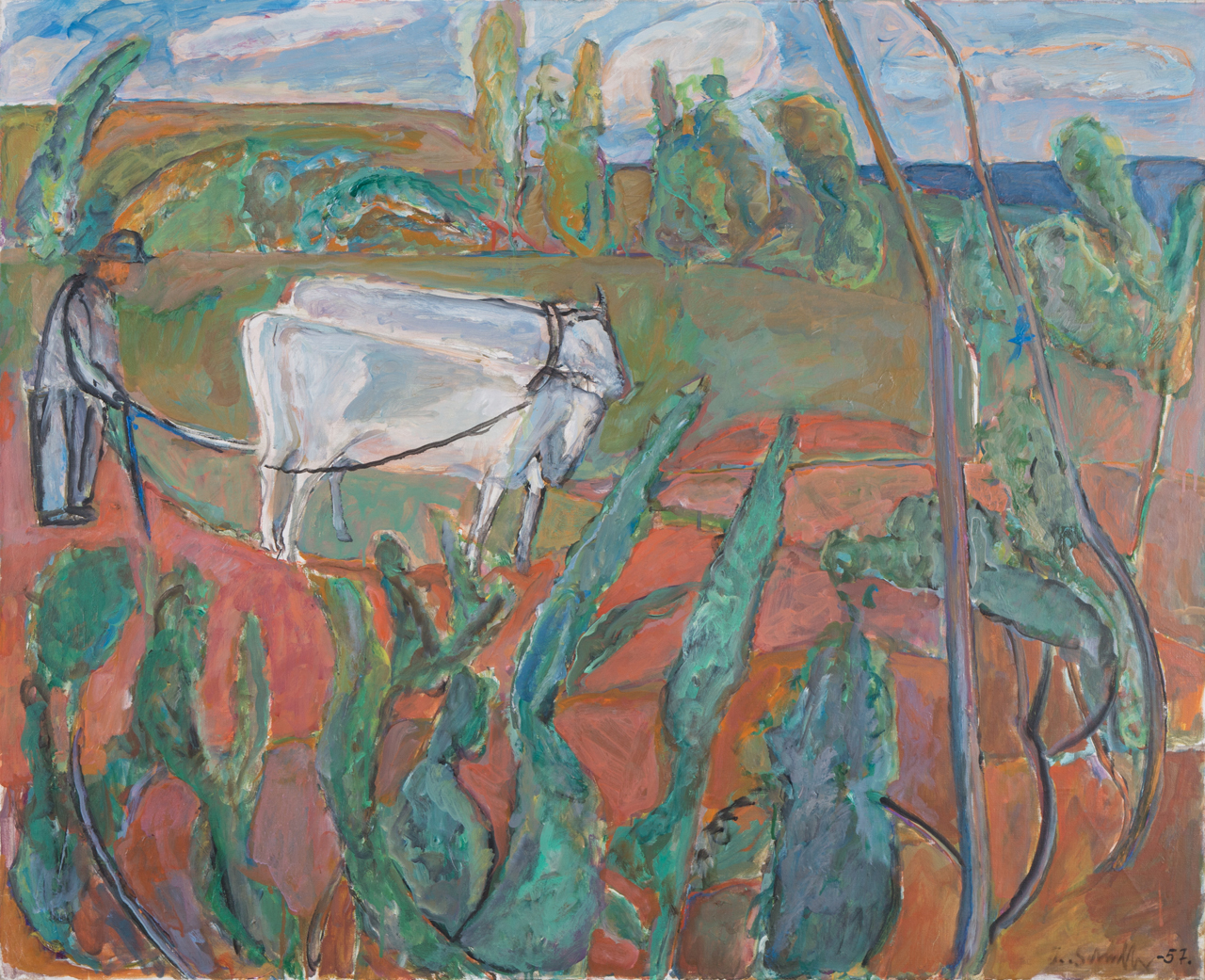Alexander Schultz (1901 - 1981)
Alexander Schultz is considered one of the finest colourists in Norwegian painting. He often worked with light colours and thin watercolour-like layers of oil paint, a technique he mastered to the full. In 1955 he was appointed professor at the art academy in Oslo, and his secure understanding of colour, rooted in French painting, came to be very significant for his students. He often painted portraits or landscapes from his immediate environment. At the same time, he was always interested in compositional and formal aspects that pointed beyond the naturalistic subjects.
"My first picture of Alexander Schultz: " Flowers "I bought at the Autumn Exhibition in 1954. The artist exhibited three pictures, and I asked Professor Reidar Aulie (jury chairman) if possible to buy one of them before the exhibition opened, since I know from experience that it is hopeless to secure something at the autumn exhibition when the galleries and audience storm in. I attended the opening and told Marie Scott Ruud which picture I wanted. To my surprise, she said it had already been sold. I was sad and upset. As I was going down the stairs to the 2nd floor I met the royals and Reidar Aulie on a walk down. On the move, I spoke to him a few words. He then briefly said: "I bought" Flowers "for you!" I was so happy! (Halvdan Hafsten)

Flowers, 1954. Purchased from the Autumn Exhibition in Norway

Children, 1954. Purchased from the artist
‘For the painting “Children”, it has been difficult to achieve a kind of function; that the children can read but don’t just sit and look down at the papers. If the children were to look at the papers, the whole action would be locked. They now sit in a clump, at different heights, and are separated due to the varied inclinations they find themselves in. It is both probable and possible that the picture could give a stronger impression of reading if the figures were more deformed, but I didn’t want that.
My struggle to find a solution to the painting’s function (that the children should have the possibility to look down at the papers) was great.’
(Written by the artist at Hafsten’s request)

Ploughing in Toscany, 1957. Purchased from the artist
‘“Ploughing in Tuscany” is set in Tuscany. The white oxen in-between the various green colours constantly caught my attention. I drew them numerous times, also painted this “motif” in small format, and finally I wanted to work with a larger picture. It was a matter of getting the animals almost not to move, to convey this “sluggishness” that was so characteristic for the way they move. This somewhat reticent gait that such heavy animals have. It gives them a powerful but also nonchalant quality.
Yes, it seems like it’s as difficult to describe this in words as it was to try to put it on the canvas!
I have the oxen and the man horizontally, and some tree trunks vertically, to the right in the picture. That’s where the ploughman and his oxen will eventually end up.’
(Written by the artist at Hafsten’s request)
Article and archive selection
Hanne Beate Ueland, Director Stavanger art museum
Photos
Stavanger art museum